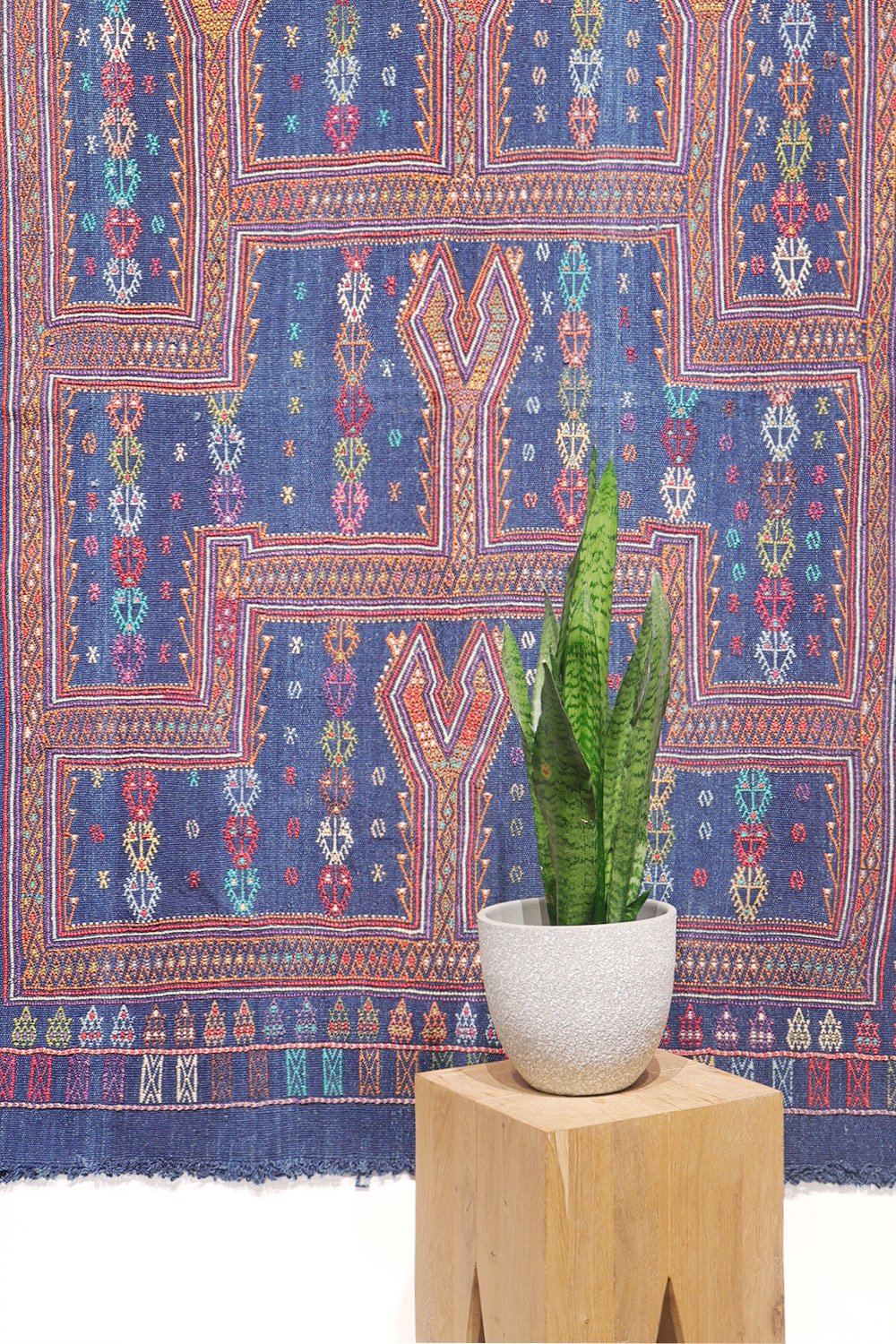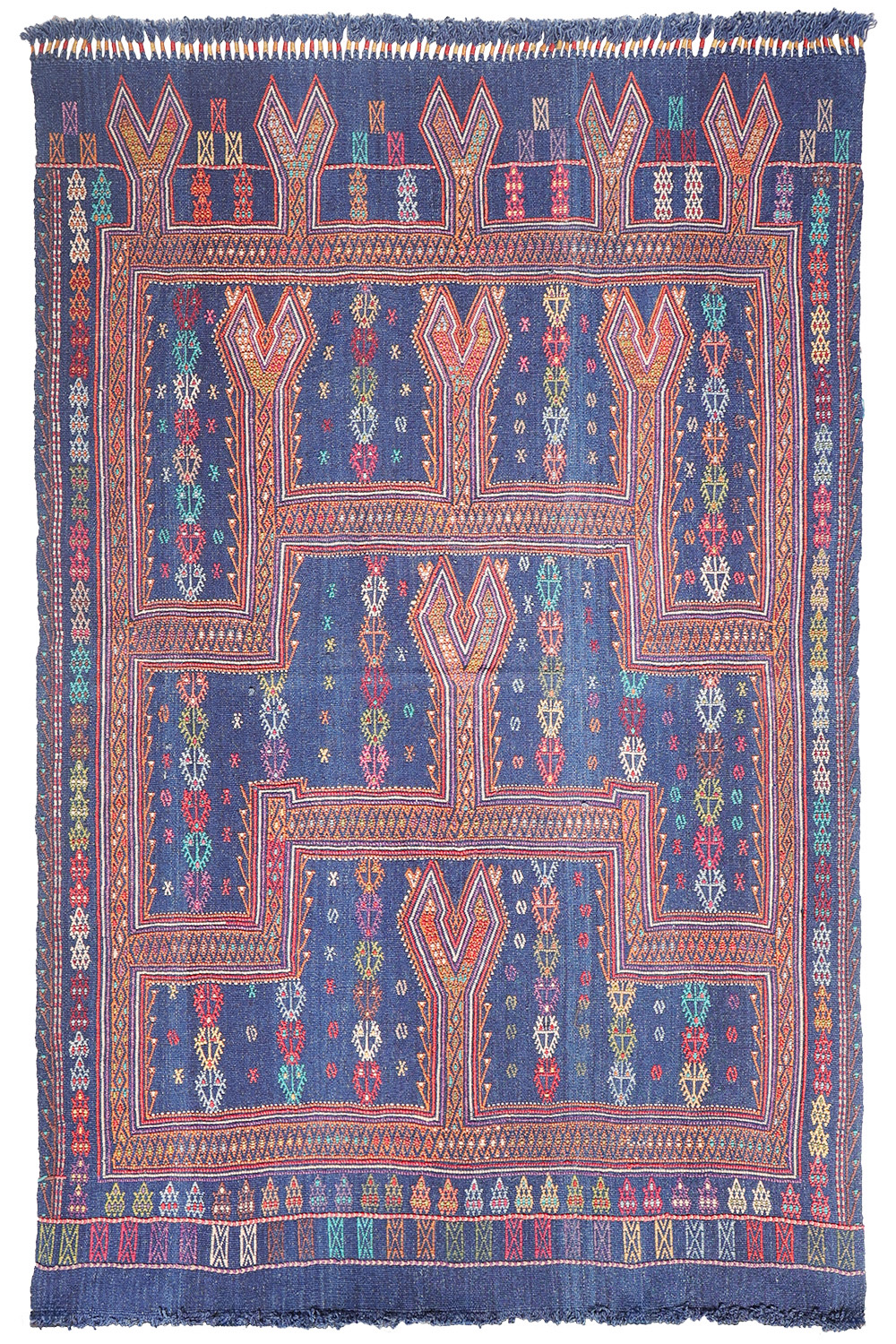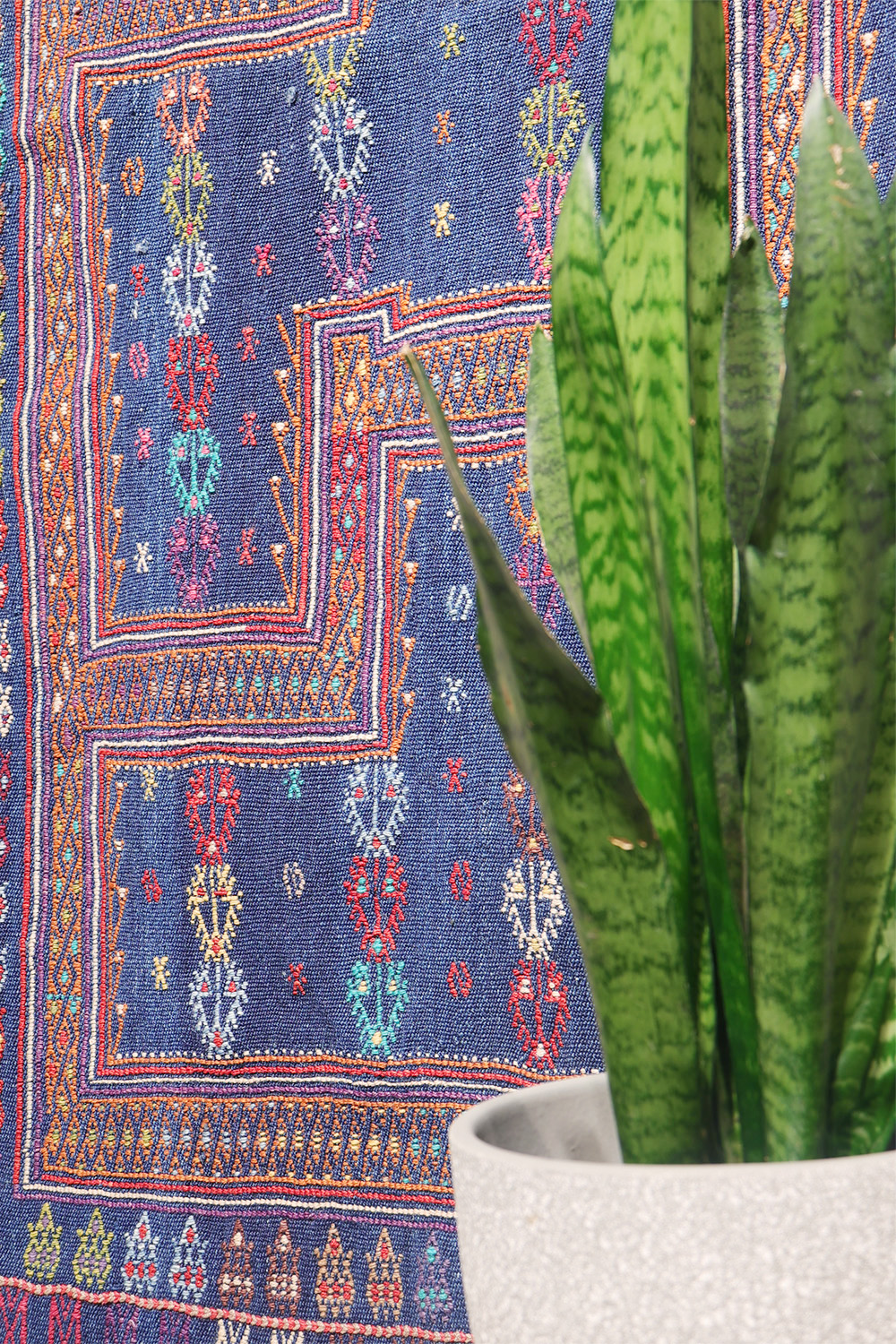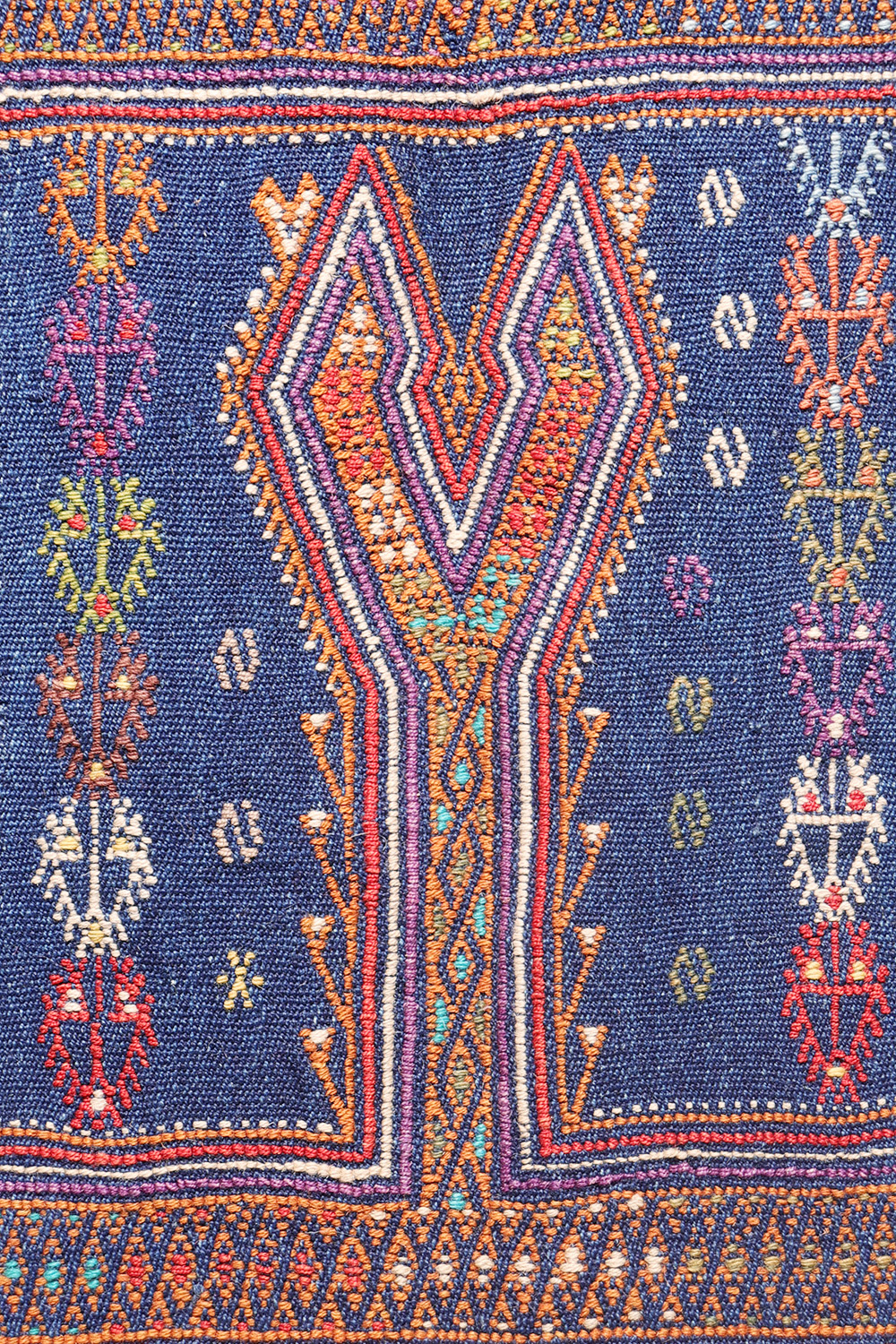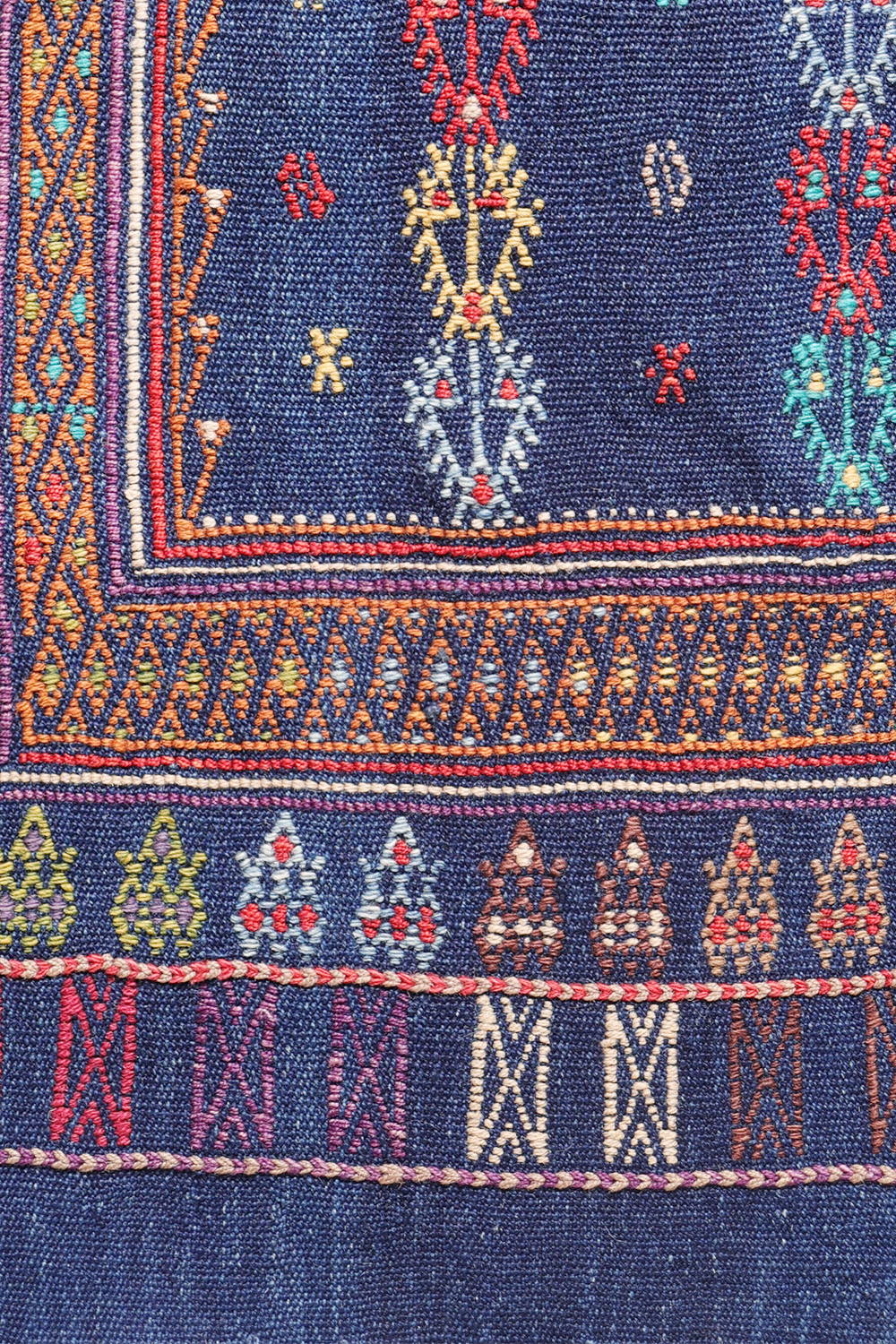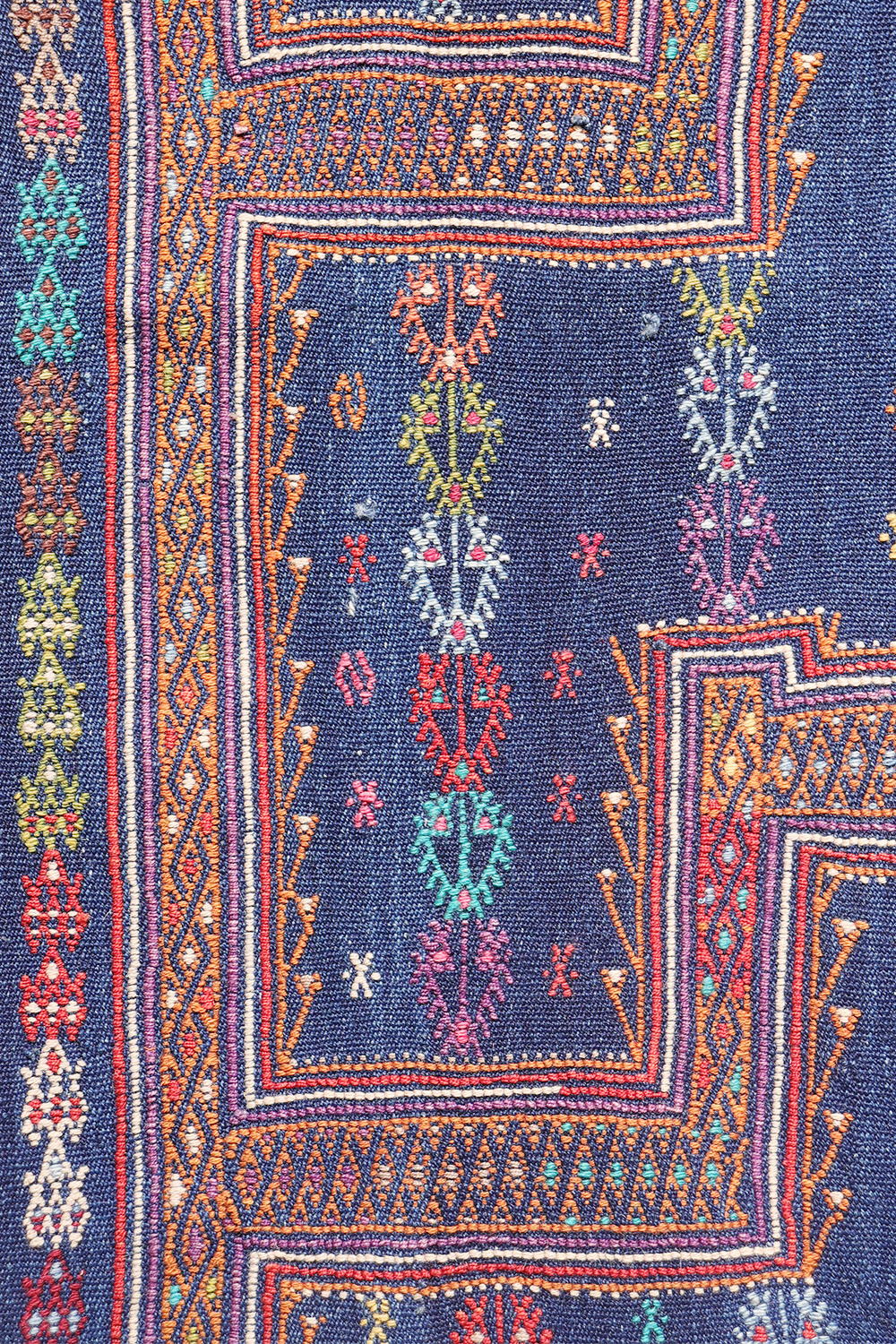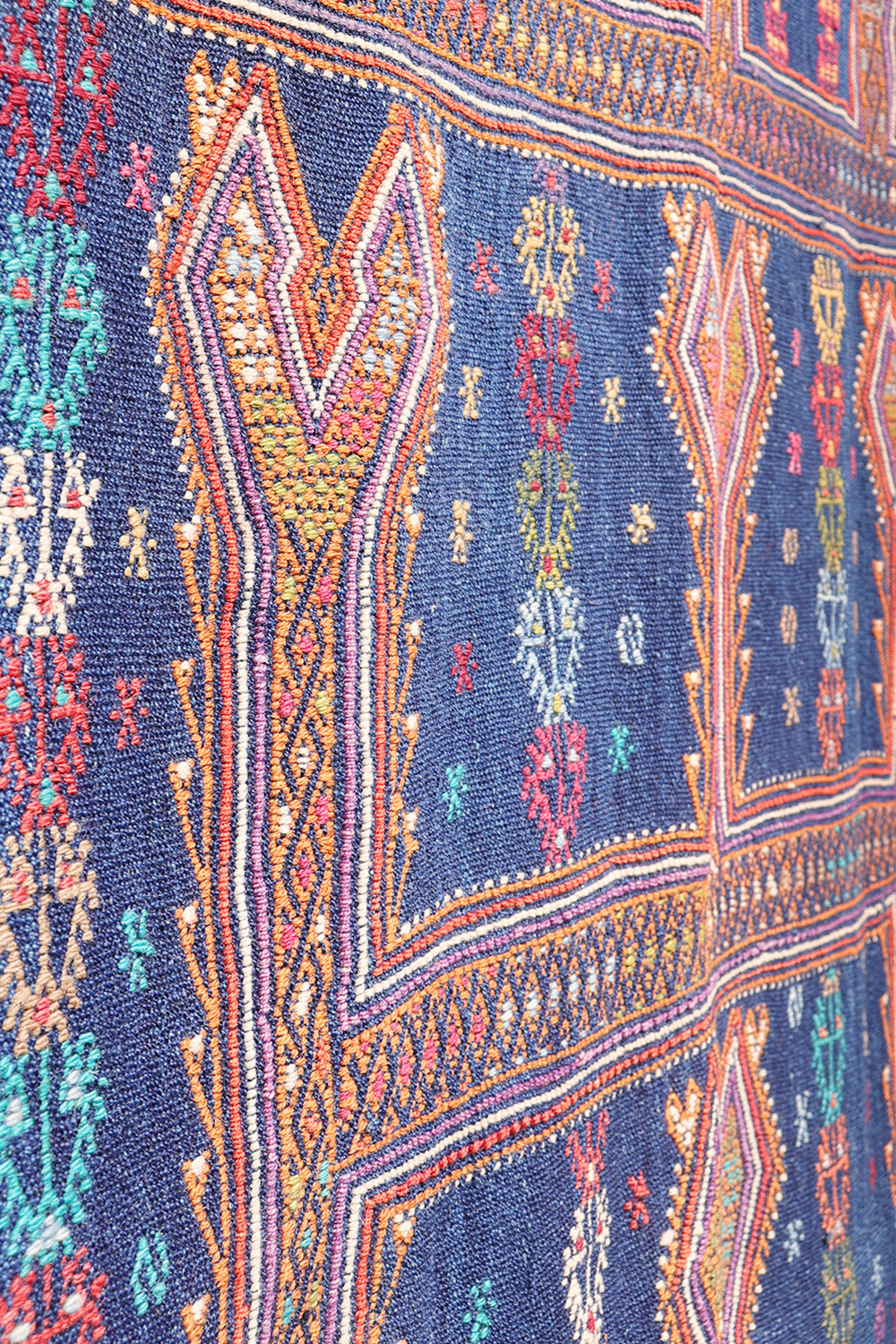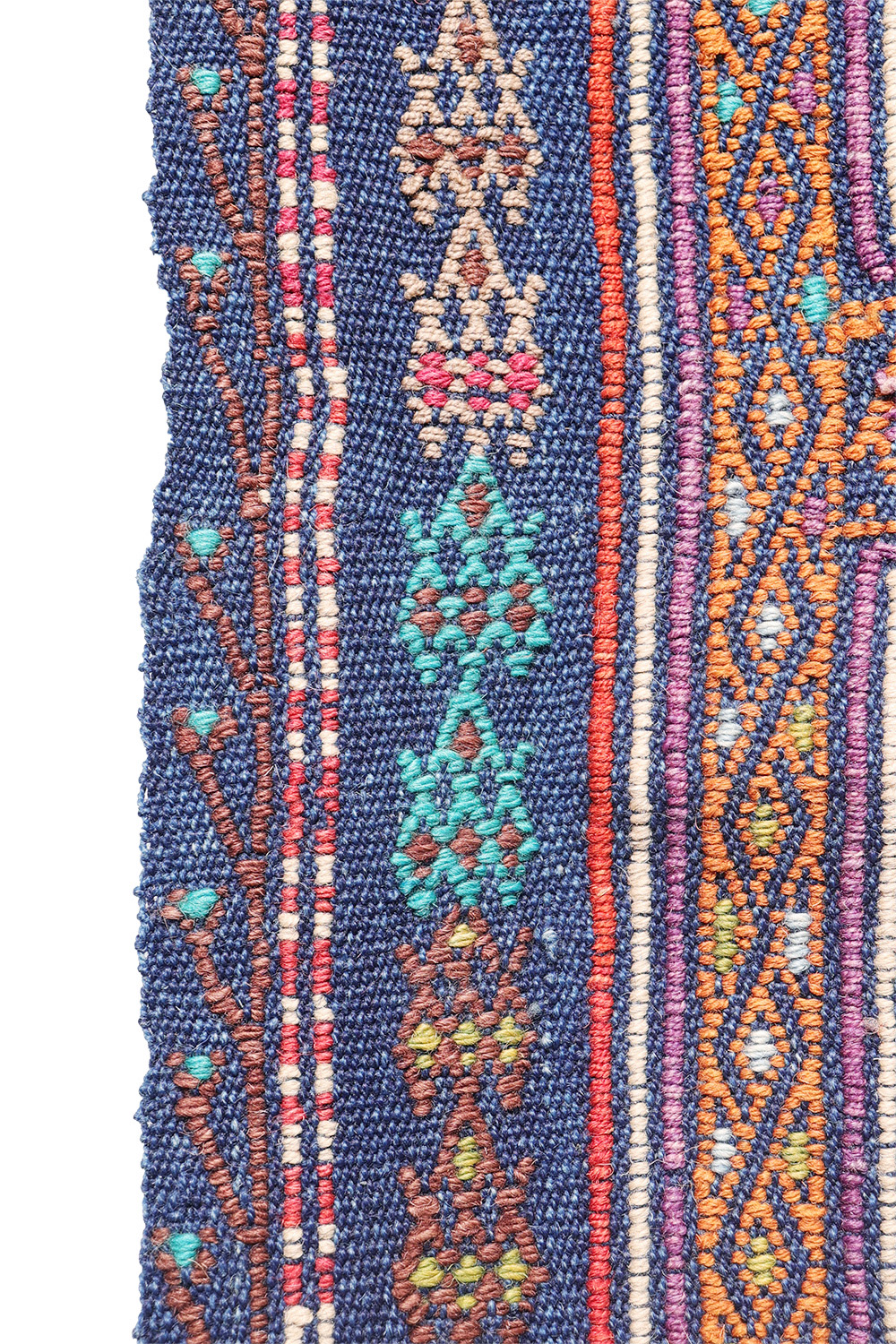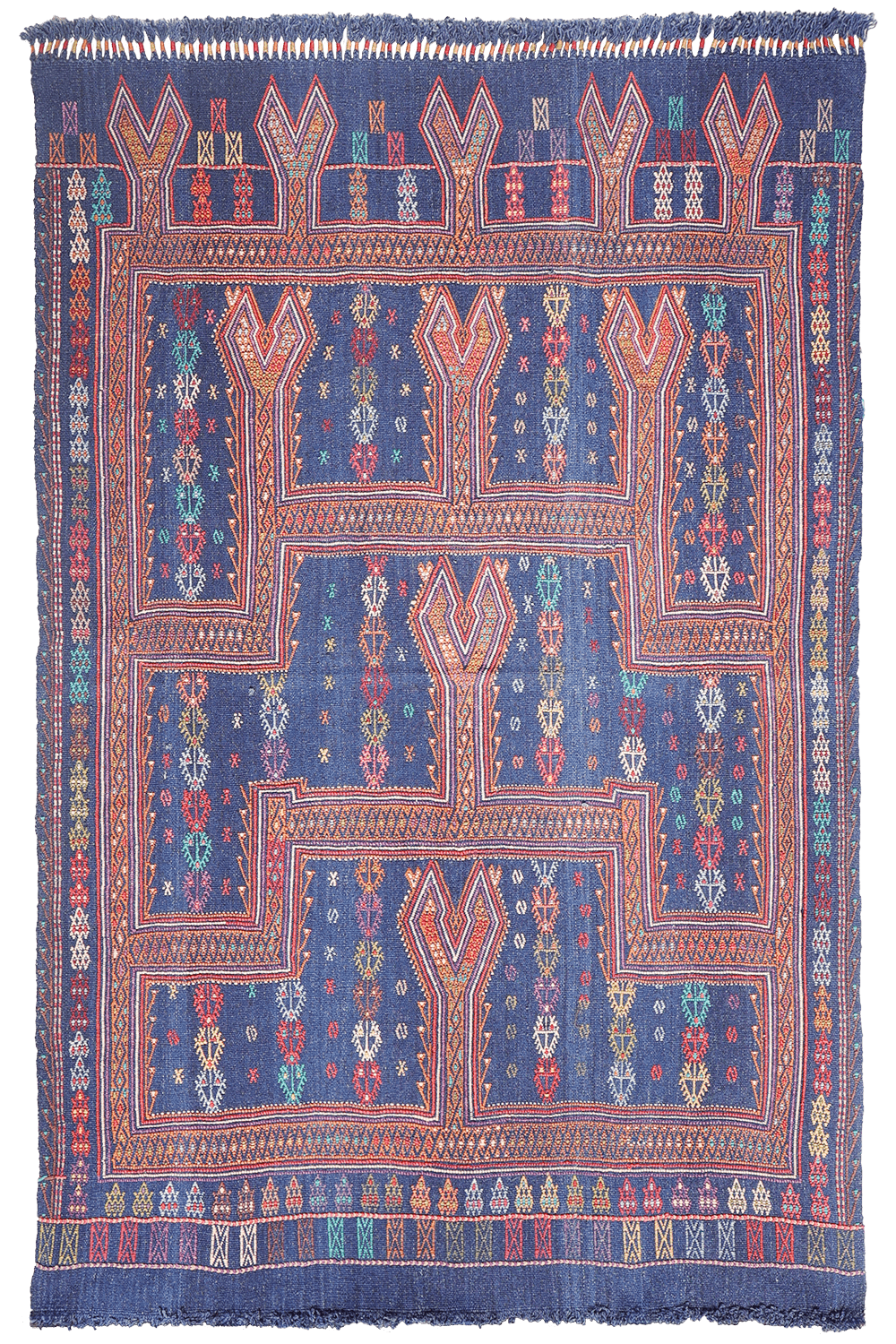975.00 €
A Happy-Ending Tale from Obruk
We love a good story with a happy ending—so here’s one worth telling.
Back around the year 2000, a passionate Turkish kilim dealer set out on a personal mission. Deeply inspired by the traditional flatweaves from the Obruk region, he began a small-scale production in his village. His vision? To recreate antique Obruk cicim kilims, but with a fresh, contemporary color palette (blue, green, red, yellow, purple).
He spared no effort: sourcing the finest wool, using only natural dyes, and working with highly skilled weavers. The result was a limited but exceptional collection—crafted with care, just like in the old days.
But tucked away in his modest shop, far off any major route, the collection remained largely unseen and unsold for years. That is, until a friend of ours was traveling through the region. While asking around about kilims, a local pointed him toward “a man who had some.” What he found was extraordinary.
In front of him were cicim kilims of rare quality—woven just two decades ago, yet bearing the richness and technique of a bygone era. So he did what anyone with an eye for beauty would do: he bought them all.
And lucky for us, we were able to acquire most of this unique Obruk cicim collection from him. A forgotten gem—rediscovered, revived, and ready to be cherished once more.
Material: 100% hand-spun sheep wool
Size: 189×130 cms
Origin: Obruk region, Turkey
Date of weaving: 2000s
Kilims or Gilims are flatwoven textiles with a woollen weft on a woollen, goat hair or cotton warp. There are many different techniques and designs. The weaver normally works within a tradition of techniques, motifs and designs specific to a particular area or ethnic group. The designs relate to her natural surroundings, protection, fertility and the harmony of family relationships. Each weaver adds something from her own creativity and sense of composition. Kilims are often woven as part of a marriage dowry and can be used to create many different objects like storage bags, horse-blankets, baby carriers, blankets and wall and floor coverings.
This kilim was hand-woven on a simple loom by a village or nomadic weaver for her own use. Probably the weaver used wool from her own sheep. The wool was first cleaned, then hand-carded, hand-spun and finally dyed by hand, often using natural dye materials like roots, nuts, berries, fruits, flowers and plants. Kilims from the last quarter of the twentieth century mostly use synthetic dyes. This kilim would have taken many months to complete.
All our kilims selected in the country of origin and are professionally washed and restored before we import them directly from Iran, Turkey and Afghanistan. Natural patina and charming imperfections in design and colour (abrash) are highly valued characteristics of hand-woven kilims.
1 in stock
Additional information
| Weight | 4 kg |
|---|
Subscribe and receive the lastest news
